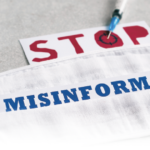NEW YORK (Reuters)—Individuals fully inoculated against COVID-19 can meet in small groups with other vaccinated people without wearing masks, but should keep wearing them outside the home, the U.S. Centers for Disease Control and Prevention (CDC) said on March 8.
CDC Director Rochelle Walensky, MD, MPH, said during a briefing that the agency’s new guidance for fully vaccinated individuals stipulated that they can also visit with unvaccinated, low-risk people from one other household without masks.
The CDC advised fully vaccinated people that they should continue with many precautions, such as avoiding medium- and large-sized, in-person gatherings, wearing masks when visiting with unvaccinated people from multiple households or wearing masks when with people who are at risk for severe COVID-19.1
“It’s important to realize … that still over 90% of the population is not yet vaccinated, and that is our responsibility to make sure, in the context of 60,000 new cases a day, that we protect those who remain unvaccinated and vulnerable,” Dr. Walensky said.
The public health guidelines address how vaccinated people can safely resume some more normal activities and contacts with those outside their households while the coronavirus is still widely circulating.
The recommendations come as about 30 million people, or 9.2% of the U.S. population, have been fully inoculated with COVID-19 vaccines made by Pfizer Inc./BioNTech SE, Moderna Inc. and Johnson & Johnson, according to CDC data.
Nearly 18% of the U.S. population, or 58.9 million adults, had received at least one dose of a COVID-19 vaccine.
Currently authorized COVID-19 vaccines prevent people from becoming ill but not necessarily from being infected. Data on whether vaccinated people can still spread the virus to unprotected people is sparse.
The CDC previously recommended that people should wear masks at all times when unable to remain at least six feet apart from others, or at all times indoors other than in their own homes.
The CDC last month advised that individuals who had been vaccinated within three months could skip the standard 14-day quarantine after exposure to someone with COVID-19, as long as they remain asymptomatic.
Some cities and states have begun lifting pandemic restrictions in recent weeks against the advice of public health experts, who say the measures should remain until many more people get vaccinated with case numbers still high and more contagious virus variants becoming prevalent in much of the country.
Reference
- U.S. Centers for Disease Control and Prevention. Vaccines: When you’ve been fully vaccinated: How to protect Yourself and Others. 2021 Mar 8.



